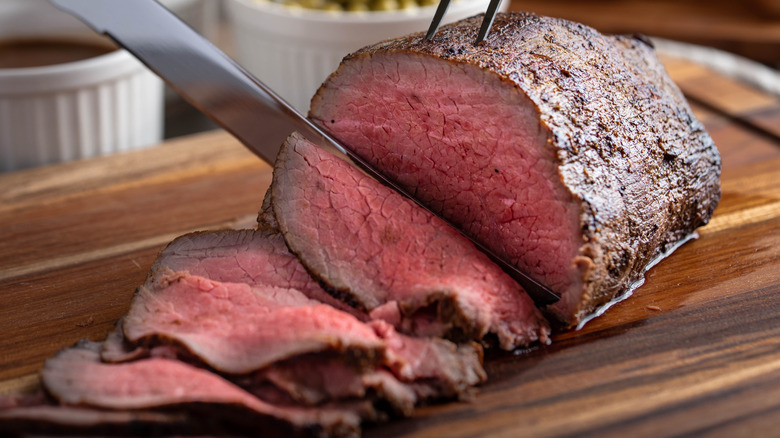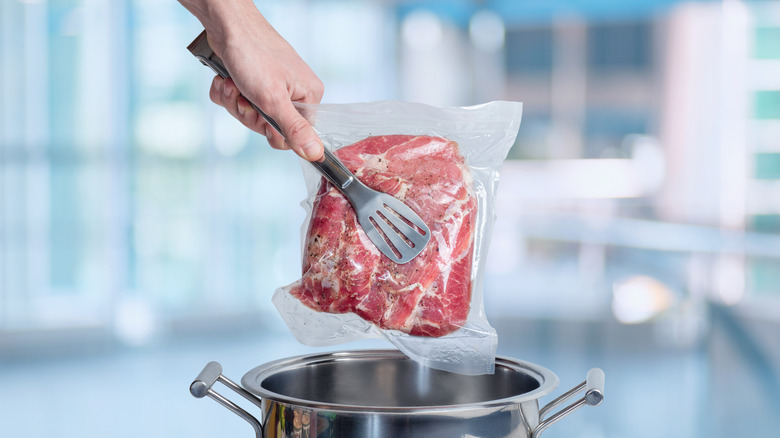What Happens If You Cook A Roast For 24 Hours?
Two words that are sure to change your culinary life are sous vide. It's a French cooking technique that involves vacuum-sealing the food and cooking it in water at a controlled temperature. While there's a variety of satisfying sous vide recipes that include fish, fruit, and even eggs, meat is one of the most rewarding things to prepare with this technique. When you sous vide meat, you don't have to worry about overcooking or undercooking it. It will cook completely evenly at the exact temperature you set it to. So, if you've perhaps been craving a super tender, delicious, and moist beef roast that's done exactly to your liking, you have to try cooking it sous vide — for 24 hours.
Meat contains a whole lot of muscle and connective tissue, which will need heat and time to properly break down. This is especially significant for tougher beef cuts, such as the shoulder cut (also known as chuck). The enzymes in the meat that break down those tougher parts become active when they come into contact with heat — but the higher the heat, the quicker they will die. If you keep the meat at the optimal temperature for the enzymes to still be alive and active (which is said to be just around 130 degrees Fahrenheit), they'll do their best work over a longer period. In other words, the more tender you want the meat to be, the longer you should leave it at the optimal cooking temperature.
The ideal temperature is between 130 and 150 degrees Fahrenheit, depending on how well-done you like your roast
The Sous vide technique ensures that your meat will cook at the temperature you choose without ever going over it. For a medium roast, the best cooking temperature is between 130 and 140 degrees Fahrenheit. If you prefer your beef well-done, you can turn up the heat to 150 degrees. The cooking time ranges between 24 and 36 hours, so it's a "set it and forget it" kind of thing. While waiting at least a full day for your food to be done can seem like a long time, it's still a lot shorter than dry aging, where similar flavor-enhancing chemical processes are taking place.
After your roast is done cooking, slightly cool it off. The finishing step is to quickly sear it on a grill or in a cast iron pan over high heat to get that perfect crust. Because the roast was cooked vacuum-sealed, all of its natural moisture was preserved, resulting in properly juicy meat that wonderfully absorbed all the seasonings it was cooked with. By allowing the sous vide process to work its magic, the 24 hours were well worth it.

